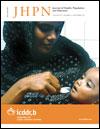Perinatal Outcomes of Multiple Births in Southwest Nigeria
DOI:
https://doi.org/10.3329/jhpn.v29i6.9901Keywords:
Cross-sectional studies, Multiple gestations, Perinatal outcomes, Retrospective studies, Twins, NigeriaAbstract
Compared to singletons, multiple births are associated with a substantially-higher risk of maternal and perinatal mortality worldwide. However, little evidence exists on the perinatal profile and risk of neurodevelopmental disabilities among the survivors, especially in developing countries. This cross-sectional study, therefore, set out to determine the adverse perinatal outcomes that are potential markers for neurodevelopmental disabilities in infants with multiple gestations in a developing country. In total, 4,573 mothers, and their 4,718 surviving offspring in an inner-city maternity hospital in Lagos, Nigeria, from May 2005 to December 2007, were recruited. Comparisons of maternal and infant outcomes between single and multiple births were performed using multivariable logistic regression and generalized estimation equation analyses. Odds ratio (OR) and the corresponding 95% confidence interval (CI) for each marker were estimated. Of the 4,573 deliveries, there were 4,416 (96.6%) singletons and 157 (3.4%) multiples, comprising 296 twins and six triplets together (6.4% of all live 4,718 infants). After adjusting for maternal age, ethnicity, occupation, parity, and antenatal care, multiple gestations were associated with increased risks of hypertensive disorders and caesarean delivery. Similarly, after adjusting for potential maternal confounders, multiple births were associated with low five-minute Apgar score (OR: 1.47, 95% CI 1.13-1.93), neonatal sepsis (OR: 2.16, 95% CI 1.28-3.65), severe hyperbilirubinaemia (OR: 1.60, 95% CI 1.00-2.56), and admission to a special-care baby unit (OR: 1.56, 95% CI 1.12-2.17) underpinned by preterm delivery before 34 weeks (OR: 1.91, 95% CI 1.14-3.19), birthweight of less than 2,500 g (OR: 6.45, 95% CI 4.80-8.66), and intrauterine growth restriction (OR: 9.04, 95% CI 6.62-12.34). Overall, the results suggest that, in resourcepoor settings, infants of multiple gestations are associated with a significantly-elevated risk of adverse perinatal outcomes. Since these perinatal outcomes are related to the increased risk of later neurodevelopmental disabilities, multiple-birth infants merit close developmental surveillance for timely intervention.
DOI: http://dx.doi.org/10.3329/jhpn.v29i6.9901
JHPN 2011; 29(6): 639-647
Downloads
151
148

